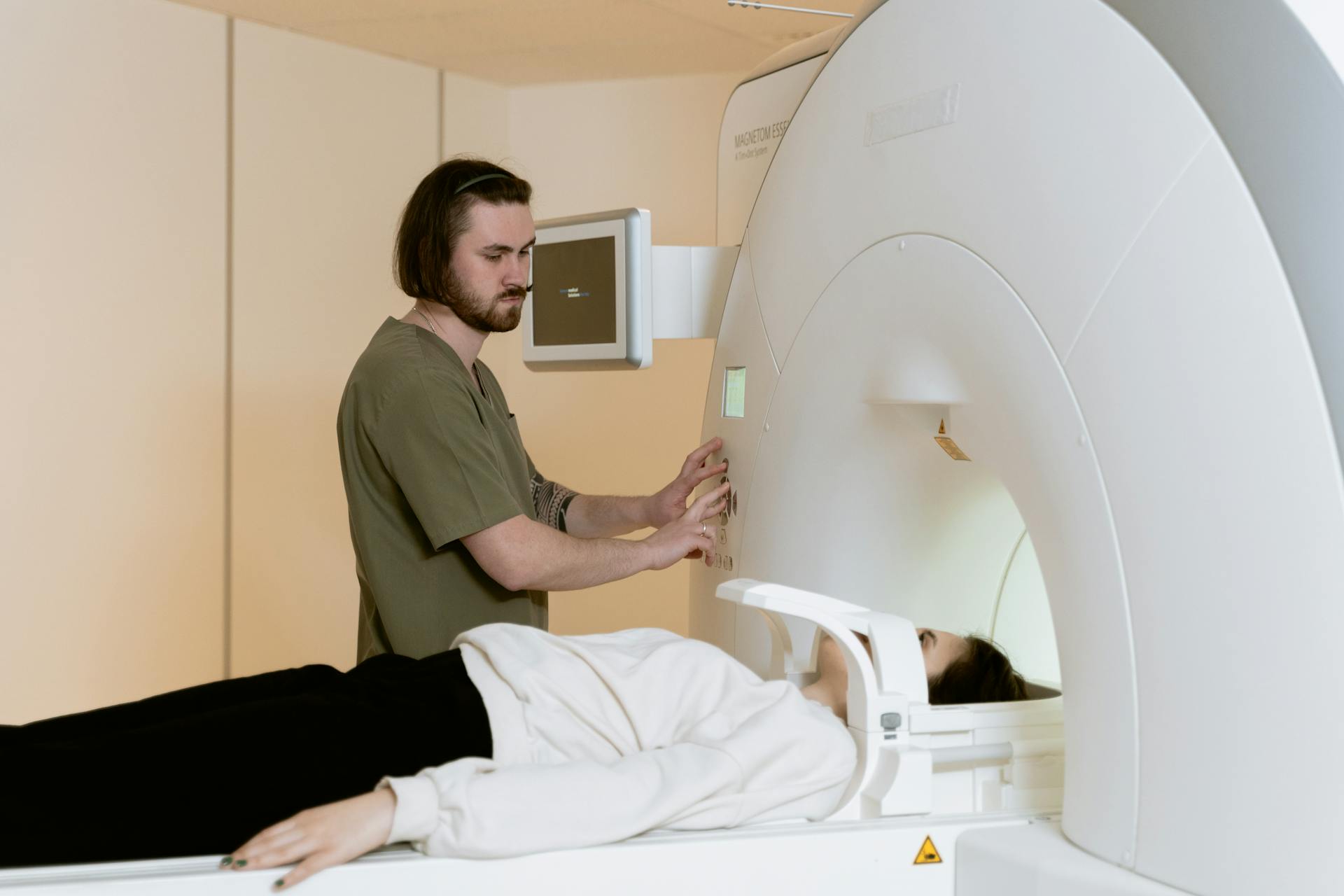
Hemangiosarcoma is a serious and often life-threatening cancer that affects cats. It is a type of malignant tumor that originates in the blood vessels.
Hemangiosarcoma is most commonly found in older cats, typically over the age of 10. The average age of diagnosis is around 12 years old.
What Is Hemangiosarcoma?
Hemangiosarcoma is a malignant cancer of the cells that form blood vessels. It's a very aggressive tumor that can spread rapidly to other organs.
In cats, this cancer occurs in older animals and there's no breed predisposition. It can start anywhere in the body, but it's more common in internal organs and the skin.
Hemangiosarcoma is characterized by its ability to fill with blood, which can cause problems when the tumor ruptures. This can lead to internal or external bleeding.
Here are the common locations where hemangiosarcoma occurs in cats:
- Spleen and liver (internal organs)
- Skin
- Bones
These tumors usually spread to the lungs, liver, spleen, and heart.
Symptoms and Diagnosis
Symptoms of hemangiosarcoma in cats can be subtle, but there are some key signs to look out for. Cats with cutaneous HSA may show no symptoms other than the presence of purple or red skin masses, typically on light-colored, sparsely haired areas of the head and ears.
The masses are usually painless when squeezed or pressed gently and can range in size from 0.1-1.0cm in diameter. They can occur as single masses or multiples.
Here are some common symptoms of hemangiosarcoma in cats:
- Anemia, weakness, and collapse
- Pale or white gums
- Difficulty breathing
- Exercise intolerance
- Fluid build-up of the abdomen
- Mass or lump under the skin
- Swelling in the bone
- Pain in the bones
What to Watch
If you suspect your cat has hemangiosarcoma, it's essential to watch for specific signs and symptoms.
Cats with hemangiosarcoma may show no symptoms other than the presence of spots on the skin, which are usually purple or red skin masses, often occurring on light-colored, sparsely haired areas of the head and ears.
A common sign of hemangiosarcoma is the development of a swelling or lump that you can feel, which may be firm but soft and fluctuate underneath the skin.
You or your vet might realize something is wrong if your cat shows signs of blood loss, such as weakness, lethargy, pale gums, or a distended abdomen from bleeding.

Here are some key signs to watch for:
Keep in mind that these signs can be non-specific and may be hard to interpret, so it's essential to consult with your veterinarian if you suspect hemangiosarcoma in your cat.
Diagnosis
Routine laboratory tests, such as a chemical blood profile and complete blood count, are usually normal but may show an abnormally low number of platelets. Abdominal and thoracic X-rays will be taken to determine how invasive the hemangiosarcoma is and whether there is metastasis in the lungs or any other internal organs.
A skin biopsy remains the method of choice for confirmation of diagnosis. Your veterinarian will take a sample of tissue from the mass to have it microscopically examined by a veterinary oncologist.
Diagnosis of hemangiosarcoma typically involves several tests, including:
- Complete blood count (CBC) including platelet numbers
- Clotting tests
- Serum chemistry panel and urinalysis
- Abdominal radiographs (X-rays) and/or ultrasound
- Chest X-rays
- Ultrasound of the heart
- Electrocardiogram (EKG)
- Pericardial tap
- Biopsy
A complete blood count will check for anemia and a low platelet count, which can be caused by hemangiosarcoma.
Diagnosis and Treatment
Diagnosis of hemangiosarcoma in cats typically involves a combination of laboratory tests and imaging studies. A complete blood count (CBC) including platelet numbers will help identify anemia and low platelet counts, which can indicate bleeding risks.
Routine laboratory tests may include a chemical blood profile and complete blood count. Abdominal and thoracic X-rays are also taken to determine the extent of the disease and check for metastasis in the lungs or other internal organs.
Diagnostic tests that may be needed to recognize hemangiosarcoma and direct treatment include:
- Complete blood count (CBC) including platelet numbers
- Clotting tests
- Serum chemistry panel and urinalysis
- Abdominal radiographs (X-rays) and/or ultrasound
- Abdominal tap
- Chest X-rays
- Ultrasound of the heart
- Electrocardiogram (EKG)
- Pericardial tap
- Biopsy
The treatment plan for hemangiosarcoma in cats depends on the location of the tumor and whether there is evidence of metastasis. Surgery may be performed to remove the tumor, and chemotherapy may be used to treat the disease.
Diagnosis In-Depth
A complete blood count (CBC) is a crucial test to check for anemia and low platelet count, which are common in cats with hemangiosarcoma.
Low platelet count increases the risk of bleeding, making it essential to monitor clotting tests.
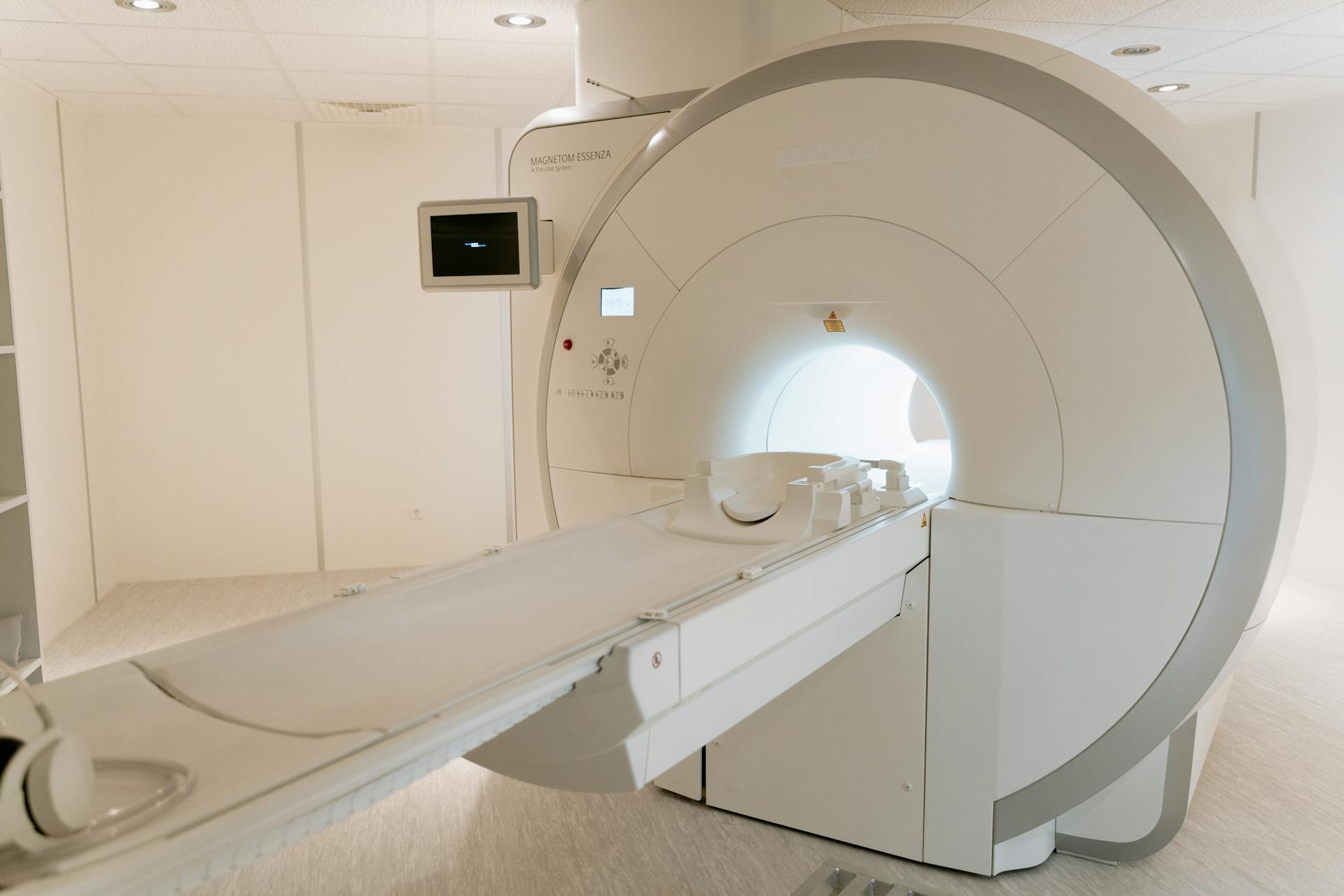
Serum chemistry panel and urinalysis tests help identify underlying diseases like kidney or liver disease.
Abdominal radiographs (X-rays) or ultrasound can be used to identify masses in the abdomen, but X-rays may not be effective if there's bleeding.
Ultrasound allows for a more detailed evaluation of the liver and spleen, but it's essential to note that older cats may have nodules that are considered aging changes.
An abdominal tap can confirm the presence of free blood in the abdomen, but the absence of cancerous cells doesn't rule out hemangiosarcoma.
A pericardial tap may be performed to remove fluid around the heart, often with the assistance of an ultrasound.
Chest X-rays are routine in cats suspected of having cancer, and they can help evaluate the size and shape of the heart.
An ultrasound of the heart can identify masses or fluid around the heart, but it may not detect small masses.
An EKG can identify irregular heart rhythms (arrhythmias) that may be secondary to hemangiosarcoma in the heart.
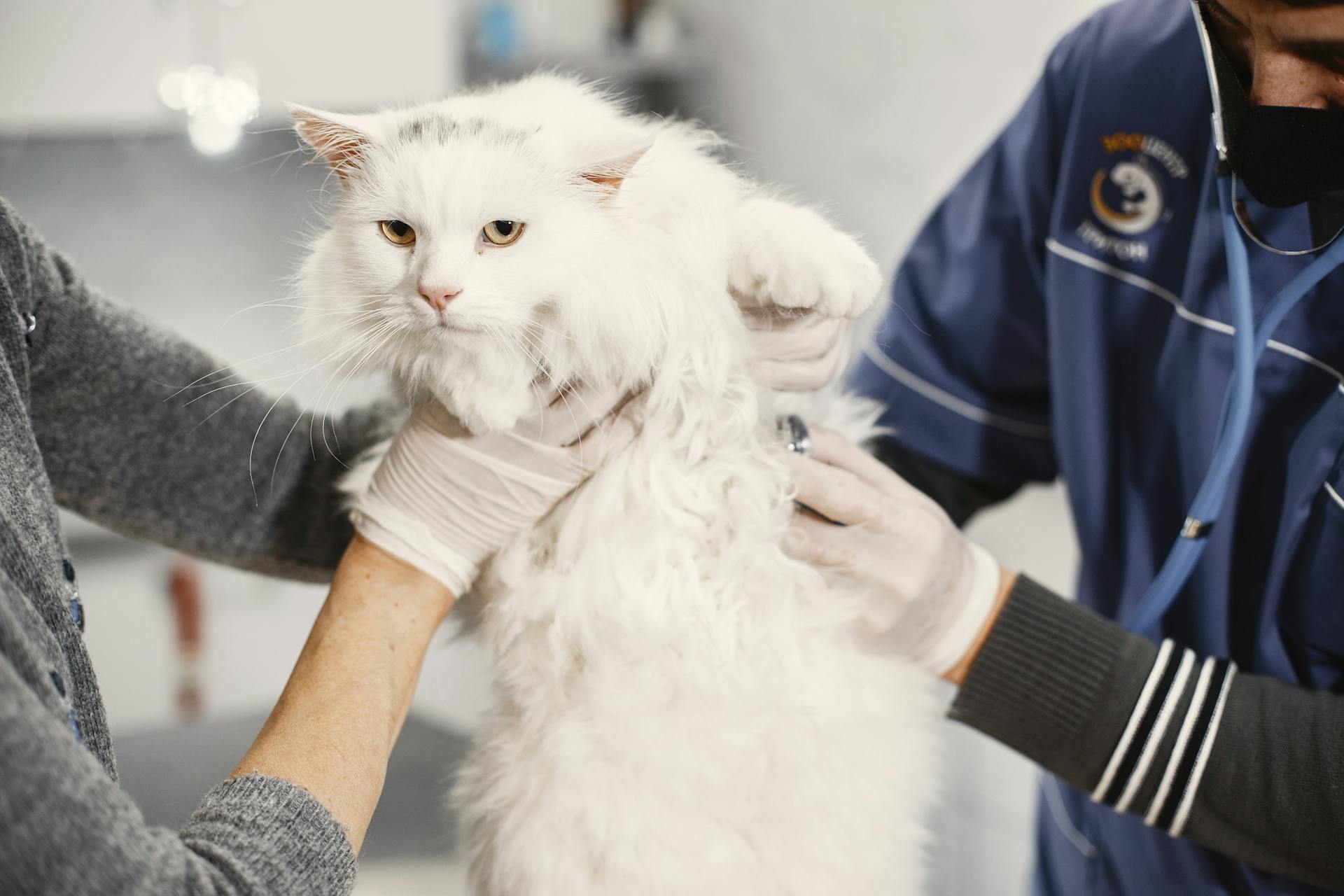
Here's a summary of the diagnostic tests that may be needed:
Surgery
Surgery is often a crucial part of treating hemangiosarcoma in cats. Surgery can help prevent or stop bleeding, but its success depends on the location and severity of the tumor.
Routine laboratory tests will include a chemical blood profile and complete blood count, which may show an abnormally low number of platelets. Abdominal and thoracic X-rays will be taken to determine the extent of the disease.
In some cases, emergency surgery is required to stabilize a patient when the tumor is bleeding. This is especially true when the tumor occurs in an internal organ such as the spleen or heart.
The type of surgery performed will depend on the location of the tumor. A splenectomy is performed when the tumor occurs in the spleen, which involves removing the entire spleen. This can be done without having an adverse effect on health.
Check this out: When to Euthanize a Cat with Seizures?
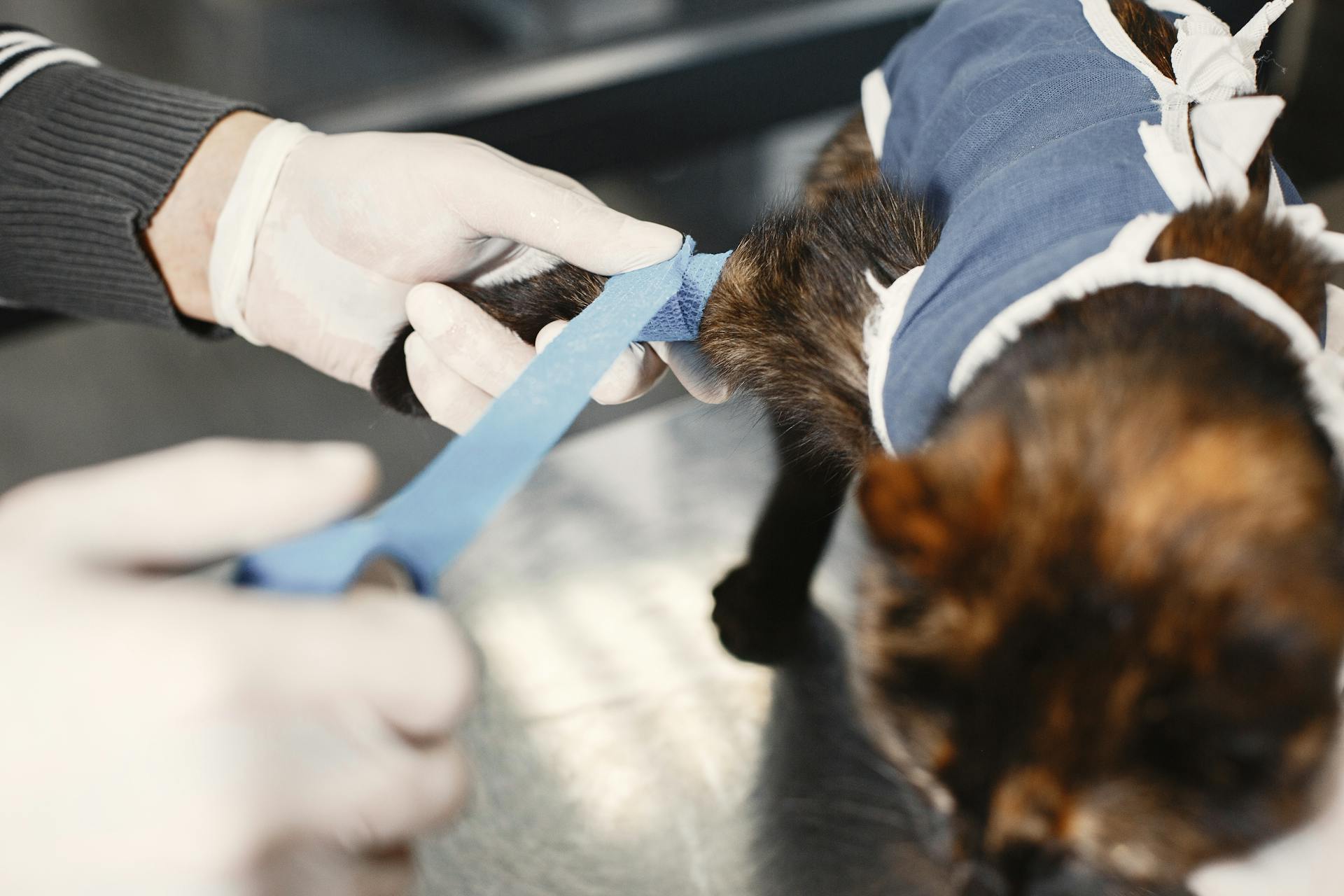
A pericardial tap may be performed when the tumor occurs in the heart. This involves removing the tumor surgically, and the outer covering of the heart, the pericardium, can also be removed to prevent future build-up of fluid around the heart.
Surgery is also required when the tumor occurs in the skin or in the tissues immediately below the skin. It's essential that normal tissue surrounding the tumor be removed, along with the mass, because cells from this tumor frequently infiltrate the surrounding tissues.
Potential complications of surgery include bleeding, infection, failure of the surgery site to heal, introduction of air into the chest cavity causing difficulty breathing, and an abnormal heart rhythm.
Here are some potential complications of splenectomy, which is the removal of the spleen:
- Infection
- Continued bleeding
- Failure of the incision to heal
- An abnormal heart rhythm
Keep in mind that the success of surgery and the prognosis depend on the location of the tumor. Treatment may also include chemotherapy and radiation therapy.
Treatment Options
Treatment for hemangiosarcoma in cats depends on the location and severity of the tumor. If the tumor is severe, cats may need to be euthanized at the time of diagnosis.
In cases where surgery is possible, it can help prevent or stop bleeding. However, chemotherapy combined with surgery gives the longest life expectancy.
Treatment options may include stabilization, intravenous fluids, blood transfusions, pericardial taps, surgery, chemotherapy, and radiation therapy. Chemotherapy is often recommended in addition to other treatments, especially if the tumor has spread.
Here are some common chemotherapy drugs used to treat hemangiosarcoma in cats:
- doxorubicin: administered intravenously once every three weeks
- cyclophosphamide: frequently given with doxorubicin or immediately after
- ifosphamide: alternated with doxorubicin
Radiation therapy can be used to control symptoms such as pain, especially if the tumor cannot be entirely removed with surgery.
Typical Treatment
Treatment for hemangiosarcoma in cats depends on the location of the tumor and whether it has spread to other parts of the body.
Surgery may be used to stop bleeding or remove the tumor, but chemotherapy is often recommended as well, especially if the tumor has spread.
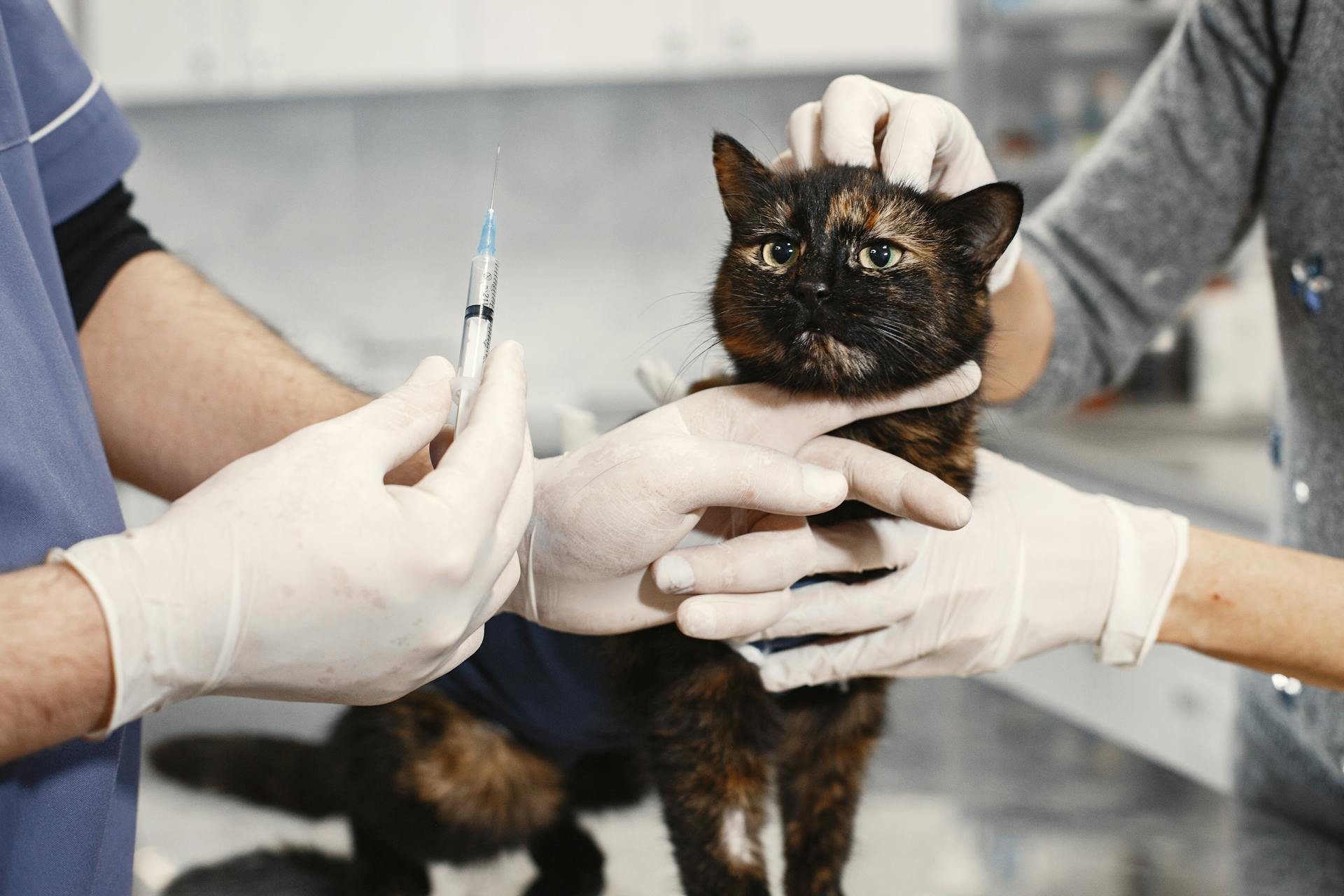
The most commonly used chemotherapy drug is doxorubicin, which is administered intravenously every three weeks.
Cats typically handle doxorubicin well, but potential side effects include gastrointestinal problems and a drop in the white blood cell count.
The number of doxorubicin treatments is limited to six or less to prevent cumulative side effects, such as heart problems.
A heart evaluation is recommended before starting doxorubicin treatment and before the fifth and sixth treatment.
Other chemotherapy drugs used to treat hemangiosarcoma include cyclophosphamide and ifosphamide, which can cause similar side effects.
Here is a summary of the typical treatment options:
In some cases, stabilization, intravenous fluids, blood transfusion, pericardial tap, and radiation therapy may also be used as part of the treatment plan.
Radiation Therapy
Radiation Therapy is an option for cats with Hemangiosarcoma. Full course radiation therapy is used when a tumor involving the skin or underlying tissues can't be completely removed with surgery.
This type of radiation therapy requires all visible evidence of the tumor to be removed first. 16 to 19 treatments of radiation may be given over a four to six week period of time. Side effects include hair loss and redness or ulceration of the skin, but these effects are temporary, lasting only three to four weeks.

Palliative radiation therapy is used to control symptoms like pain when the tumor can't be entirely removed with surgery. It involves giving a few large doses of radiation therapy to the tumor over a two to three week period of time. Side effects are very few, and it's commonly used when the tumor occurs in the bone.
Here are the key differences between full course and palliative radiation therapy:
- Full course radiation therapy: 16 to 19 treatments over 4-6 weeks, with side effects of hair loss and skin redness/ulceration.
- Palliative radiation therapy: a few large doses over 2-3 weeks, with very few side effects.
Recovery and Care
After a cat is diagnosed with hemangiosarcoma, a full-body workup is necessary to determine the extent of the disease.
Your veterinarian will likely recommend blood work, radiographs (X-rays), or an ultrasound to check for changes such as metastasis.
Surgery is often necessary to remove the spleen, which can cause bleeding, and may be curative if the tumor is small.
Many cats with hemangiosarcoma need supportive care through blood transfusions or fluid therapy due to bleeding.
Chemotherapy may be recommended by your veterinarian, and doxorubicin is one common chemotherapeutic agent used.
Yunnan baiyao, an herb that helps stop bleeding, can be used as a palliative measure, especially if surgery is not an option.
The life expectancy for many cats with hemangiosarcoma is around three months with surgery alone, and roughly 6 to 9 months with a combination of surgery and chemotherapy.
Follow-up Care
Follow-up care is crucial after surgery to ensure the best possible outcome.
Regular monitoring for additional cutaneous HSA lesions is necessary after surgery.
This means keeping a close eye on your cat's skin for any new or suspicious growths.
Ongoing monitoring can help catch any potential issues early on, when they're easier to treat.
Prognosis is good with surgical removal of cutaneous lesions and no evidence of spread at the time of surgery.
With proper follow-up care, cats with cutaneous HSA can live for around 48 months after surgery.
This is a significant improvement from the mean survival time of around 30 months when no treatment is rendered.
By following up regularly with your veterinarian, you can help your cat stay healthy and happy.
Curious to learn more? Check out: Why Are There No Cats in the Bible?
Cat Care
Caring for a cat with hemangiosarcoma requires a full-body workup, which may include blood work, radiographs, or an ultrasound to check for changes like metastasis.
Your veterinarian will likely recommend surgery to remove the affected spleen, which can help control bleeding.
Many cats with hemangiosarcoma experience bleeding, so they may need blood transfusions or fluid therapy to support their care.
Chemotherapy, such as doxorubicin, may be used to treat the condition, although the effectiveness is not well-studied due to the limited number of cases.
Using an herb like Yunnan baiyao may help stop bleeding, but its mechanism of action is unknown and it's usually used as a palliative measure.
The life expectancy for cats with hemangiosarcoma varies, but it's around three months with surgery alone, and roughly 6 to 9 months with a combination of surgery and chemotherapy.
Risk Factors
Exposure to the sun is a potential cause of cutaneous hemangiosarcoma in cats.
Cats with shorter hair and lighter fur are more likely to develop this type of cancer than those with longer or darker-haired coats.
We don't know the exact cause of hemangiosarcoma in cats, but it may be multifactorial or caused by various factors.
It's worth noting that some cats may be more prone to hemangiosarcoma due to their individual characteristics, but we still don't know the exact reason why.
In-Depth Information

Hemangiosarcoma in cats can be a challenging diagnosis to make, as it can mimic other diseases that cause similar symptoms.
The spleen is a vital organ that filters the blood and stores red blood cells. In cats with hemangiosarcoma, the spleen can become enlarged and may rupture, leading to bleeding and anemia.
Some systemic cancers may involve the spleen, either as a primary site or in addition to other areas of the body. The two most common cancers that can do this are lymphosarcoma and mast cell tumor.
Other diseases that can cause similar symptoms to hemangiosarcoma include hemangioma, a benign tumor that can cause the same clinical signs as hemangiosarcoma but does not spread to other areas of the body.
A complete blood count (CBC) is a crucial test in diagnosing hemangiosarcoma. It can help detect anemia and a low platelet count, which are common in cats with hemangiosarcoma.
The risk of bleeding may be increased when clotting tests are abnormal. This information is essential for your veterinarian when considering surgery.
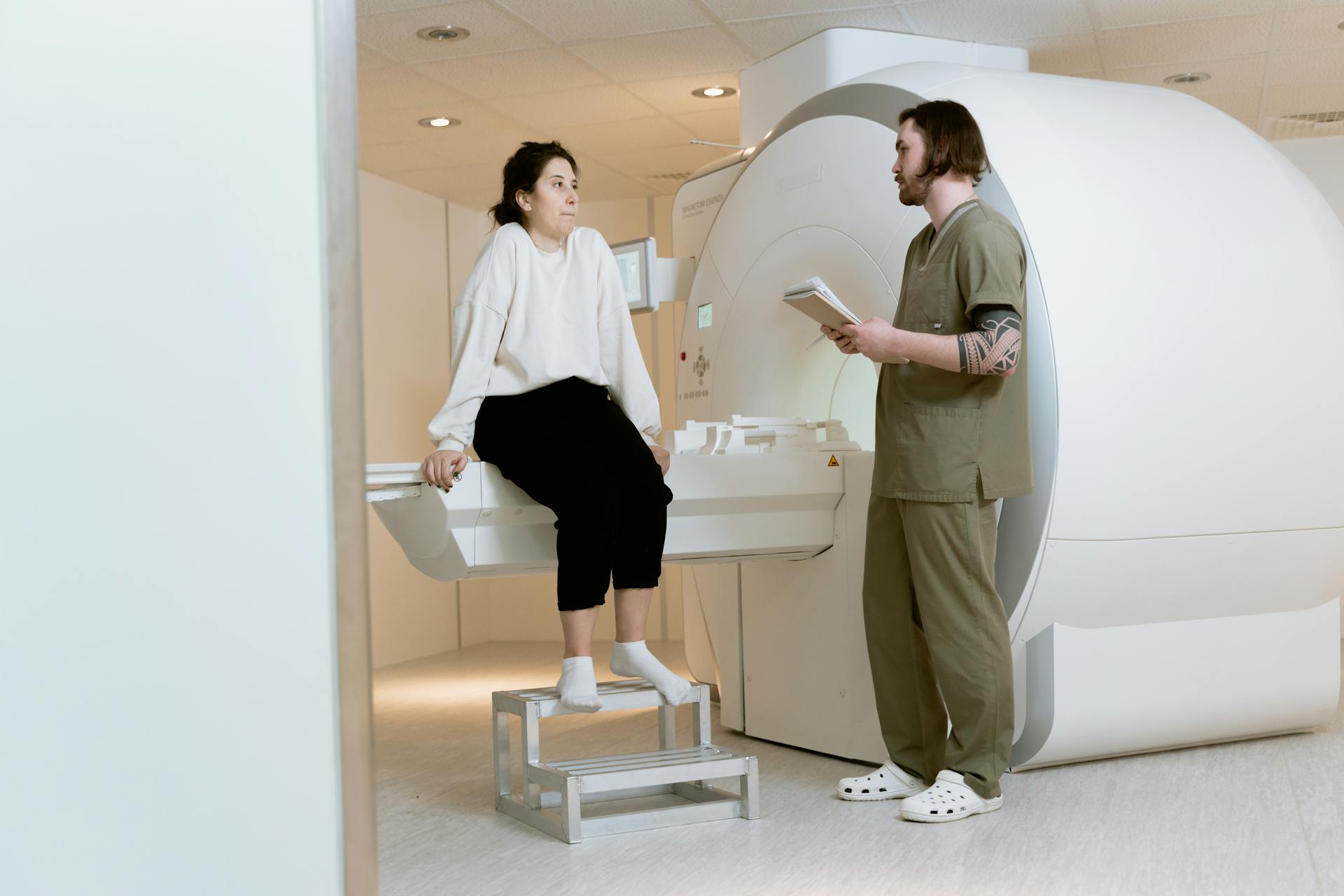
Here are some other tests that may be performed to diagnose hemangiosarcoma:
- Abdominal radiographs (X-rays) or ultrasound to identify a mass in the abdomen
- Serum chemistry panel and urinalysis tests to identify underlying diseases
- Abdominal tap to confirm the presence of free blood in the abdomen
- Chest X-rays to evaluate the lungs and heart
- Ultrasound of the heart to identify a mass or fluid around the heart
- EKG to identify irregular heart rhythms
It's essential to note that older cats may have nodules in the liver and spleen that are considered aging changes, but this does not necessarily mean that cancer is present.
Frequently Asked Questions
How long do cats live with hemangiosarcoma?
Cats with hemangiosarcoma typically live 1-4 months with surgery alone, but may live 6-8 months with chemotherapy in addition to surgery. Understanding the prognosis and treatment options is crucial for making informed decisions about your cat's care.
How do you treat a cat with a cutaneous hemangiosarcoma?
Treatment for a cat with cutaneous hemangiosarcoma typically involves stabilizing the cat, surgically removing the tumor, and administering chemotherapy to prevent cancer spread. This treatment approach aims to control symptoms and improve quality of life.
When to euthanize a cat with hemangiosarcoma?
Euthanasia may be considered for cats with hemangiosarcoma to prevent suffering from internal bleeding, especially if treatment is not an option. Consult a veterinarian to determine the best course of action for your cat's specific condition.
What are the stages of a hemangiosarcoma?
Hemangiosarcoma stages include Stage I (tumor confined to the spleen), Stage II (ruptured tumor with regional lymph node involvement), and Stage III (distant lymph node or tissue metastases). Understanding these stages is crucial for determining the best treatment options and prognosis for this aggressive cancer.
What is the prognosis for spleen cancer in cats?
The prognosis for spleen cancer in cats is generally poor, with treatment potentially extending life expectancy by about 3 months. Unfortunately, sudden death is often the first and only symptom, making early detection and treatment challenging.
Sources
- https://pubmed.ncbi.nlm.nih.gov/18081524/
- https://www.petmd.com/cat/conditions/cancer/c_ct_hemangiosarcoma_skin
- https://vetster.com/en/conditions/cat/cutaneous-hemangiosarcoma
- https://www.catster.com/ask-the-vet/hemangiosarcoma-in-cats/
- https://www.semanticscholar.org/paper/Hemangiosarcoma-in-cats%3A-53-cases-(1992-2002).-Johannes-Henry/d58786c29cad5a8d981b93608073eee9807fee8e
- https://www.petplace.com/article/cats/pet-health/hemangiosarcoma-in-cats
Featured Images: pexels.com

